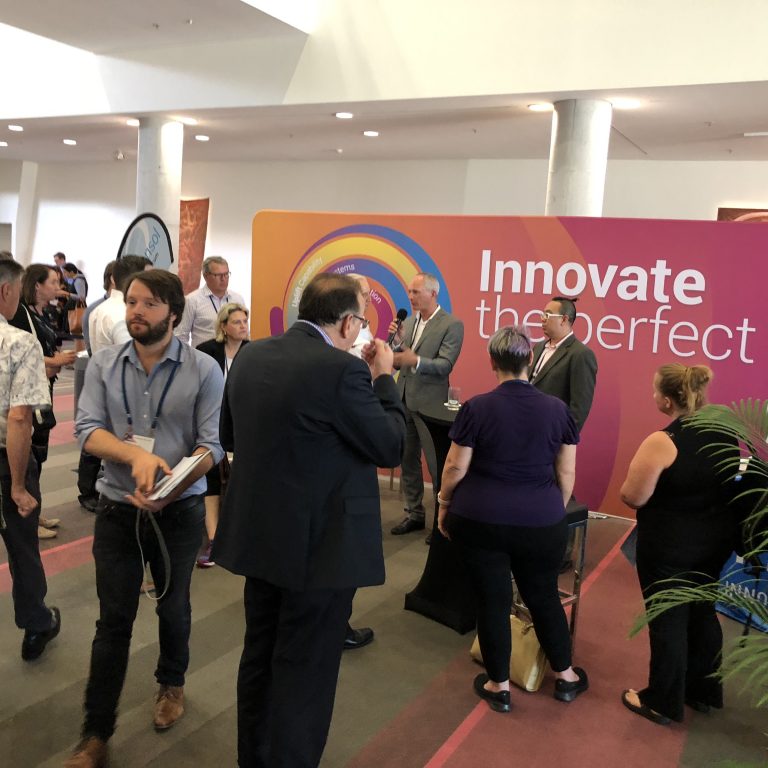It’s no secret that businesses who consistently innovate have increased productivity resulting in significantly higher profits[1]. However, innovation-active businesses represent a disproportionate share of the economy, with just 45% of Australian businesses considered to be innovation-active in 2014-15, despite generating 60% of sales and employment[2].
Tellingly, 56% of innovation-active businesses reported encountering barriers to innovation, compared to just 27% of non-innovation-active businesses[3].
This suggests that businesses face complex barriers to becoming consistently innovative, a conclusion echoed in the Global 1000 Innovation Study from 2014 which found that close to 70% of businesses in the study felt they were yet to master the elements of innovation required for sustainable success over the coming 10 years[4].
The external barriers that the Australian government is starting to tackle:
Businesses face external barriers to innovation, these are commonly influenced by global-trends, government policies and economic growth. The National Innovation and Science Agenda released in 2016, identified several external obstacles that Australia needed to overcome, notably: insufficient access to early stage capital; poor industry-research collaboration; and a lack of proactive support from government[5].
The Australian Bureau of Statistics also found that during the year ended 30 June 2015, the most significant barrier to innovation for Australian businesses was lack of access to additional funds (18%). External barriers to innovation are summarised in the Australian Innovation System Report as: limited access to finance and the complexity of government regulations. However, this report also acknowledged a third barrier, that of the internal skills base within an organisation.
The Australian government is committed to improving their global position from Innovation Follower (ranking 23rd in the Global Innovation Index[6]) to Innovation Leader. They are therefore implementing initiatives to address these funding and regulatory issues as well as generating incentives to encourage collaboration[7].
A recent paper by the Australian Industry Group aligned with the National Innovation and Science Agenda to emphasise the importance of collaborative innovation. However, the paper acknowledged that businesses faced many barriers to successful collaboration including: lack of skills (or time) available in the business to pursue collaboration, and difficulty in aligning research with business objectives or strategy[8].
Both the Australian Industry Group paper and the Australian System Report identified internal barriers to innovation. Businesses who have resolved their internal barriers and can capitalise quickly on market opportunities will be able to take advantage of government initiatives and move towards collaborative innovation.
What are these internal barriers?
While the most significant barrier reported by Australian businesses was external, this was closely followed by two internal barriers: lack of skilled persons within the business or labour market (16.4%) and cost of development or introduction/implementation (12.7%) of an innovative idea[9]. A study by GE in 2013 echoes this with 52% of US executives acknowledging that new innovation models and processes were required for businesses to accelerate the process of bringing a new-idea to market[10].
There are multiple research papers and articles that identify internal barriers to innovation, these can be summarised as follows: poor alignment between innovation and business goals; lack of time, resources, or staff capability; and complex or archaic systems and processes[11] [12] [13].
Strategy+Business in their ten-year analysis of Global Innovation Leaders, suggest that to address barriers to innovation businesses should first look inwards and: invest in developing their staff and internal business capabilities; in addition to implementing systematic innovation processes that align with customer need and organisational strategy. In fact, the study found that companies who tightly aligned their business and innovation strategies had 40% higher operating income growth over a 3-year period[14].
Enablis, a high-growth innovative firm in Australia averaging 35% year-on-year growth, have taken this recipe for innovation success a step further – attributing their growth to three internal organisational components: aligning their strategic focus with customer need; maintaining a flat staff structure with a strong internal culture; and investing in technological advancements to stay on the cutting edge of emerging opportunities[15].
This echoes a quote from Steve Jobs in an interview with Fortune magazine in 1998: “It’s not about the money. It’s about the people you have, how you’re led, and how much you get it.”[16]
How can businesses address these barriers?
In our many years of working with major organisations in their innovation, change and transformation agendas we note that there is a plethora of rhetoric on innovation, yet an absence of practical and comprehensive information for business on how to successfully innovate, particularly in terms of how to overcome the complex barriers to innovation that many businesses experience.
In a bid to help enterprises to take a more systematic approach to continuous innovation, we’re developing The Modern Business Transformation (MBT) Framework. The MBT Framework offers a comprehensive approach to accelerate innovation and enhance organisational agility with a key focus on developing internal business capabilities while also establishing the structure, governance and method required for continuous innovation.
The Framework consists of three fundamental pillars: Innovation Lifecycle, Capability Uplift Strategy, Technology Platform, in combination these help organisations to practically establish continuous innovation, optimise business operations, and keep pace with market changes.
- The Innovation Lifecyle: establishes practices for continuous innovation so that ideas either ‘fail fast’ or ‘operationalise quickly’. This ensures business and innovation strategies are aligned and consider commercial and customer need.
- Capability Uplift: identifies and addresses aspects of business operations that must be optimised to support innovative change including Leadership and Culture; Organisational Strategy; Changes and Communications; Methods; Process; People; and Technology. This ensures the internal skills set, processes and capabilities do not act as an inhibitor to innovation.
- Technology Platform: implementing a responsive, rapid application development platform that can keep pace with the business and market changes. This equips the organisation with the streamlined systems and tools to proactively engage with emerging opportunities.
At its core, the Framework helps position organisations to quickly capitalise on market opportunities, respond to threats and competition more readily, and to harness and operationalise innovative ideas at speed. This means organisations can adapt to government and industry changes as they come over the horizon.
You can learn more about the MBT Framework throughout this website, or feel free to connect with us and share your ideas.
Further Innovation related articles:
- The Case for Innovation
- Rethinking the way we deliver business solutions
- Lead the race to market with innovation
Sources:
[1] Office of Chief Economist (2016) Australian Innovation System Report – https://industry.gov.au/Office-of-the-Chief-Economist/Publications/Documents/Australian-Innovation-System/2016-AIS-Report.pdf,
[2] Office of Chief Economist (2016) Australian Innovation System Report – https://industry.gov.au/Office-of-the-Chief-Economist/Publications/Documents/Australian-Innovation-System/2016-AIS-Report.pdf,
[3] Australian Bureau of Statistics (2016) Innovation in Australian Business http://www.abs.gov.au/ausstats/abs@.nsf/mf/8158.0
[4] Strategy+business (2014) Proven Paths to Innovation Success – https://www.strategyand.pwc.com/media/file/Proven-Paths-to-Innovation-Success.pdf
[5] Australian Government (2016) National Innovation and Science Agenda – https://www.innovation.gov.au/page/national-innovation-and-science-agenda-report
[6] Global innovation index (2017) https://www.globalinnovationindex.org/analysis-economy
[7] Australian Government (2016) National Innovation and Science Agenda – https://www.innovation.gov.au/page/national-innovation-and-science-agenda-report
[8] Australian Industry Group (2016) Joining Forces: Innovative success through partnerships http://cdn.aigroup.com.au/Reports/2016/JoiningForces_Innovation_success_through_partnerships_Sept_2016.pdf
[9] Australian Bureau of Statistics (2016) Innovation in Australian Business http://www.abs.gov.au/ausstats/abs@.nsf/mf/8158.0
[10] GE (2013) Global Innovation Barometer https://www.ge.com/sites/default/files/Innovation_Overview.pdf
[11] de Dreu, C. K., Nijstad, B. A., Bechtoldt, M. N., & Baas, M. (2011). Group creativity and innovation: A motivated information processing perspective. Psychology of Aesthetics, Creativity, and the Arts, 5(1), 81.
[12] Sun, H., Wong, S. Y., Zhao, Y., & Yam, R. (2012). A systematic model for assessing innovation competence of Hong Kong/China manufacturing companies: A case study. Journal of Engineering and Technology Management
[13] Loewe, P. Dominiquini, J. (2006) Overcoming the barriers to effective innovation Strategy and Leadership, Vol 34. No.1 23-31
[14] Strategy+business (2014) Proven Paths to Innovation Success – https://www.strategyand.pwc.com/media/file/Proven-Paths-to-Innovation-Success.pdf
[15] Office of Chief Economist (2016) Australian Innovation System Report – https://industry.gov.au/Office-of-the-Chief-Economist/Publications/Documents/Australian-Innovation-System/2016-AIS-Report.pdf,
[16] Strategy+business (2014) Proven Paths to Innovation Success – https://www.strategyand.pwc.com/media/file/Proven-Paths-to-Innovation-Success.pdf
About the Author
Chris O'Connor
Independent Consultant
MBT Independent Consultant, Chris O’Connor is focused on helping organisations to find the right mix of innovative practices, operational agility and organisational maturity. Chris has over 25 years of experience working with small and large organisations in a variety of industries and experiencing the common problems that the need for change brings. His experience includes organisational transformation, culture and performance, operational change program, innovation and agility, technology lead change initiatives and business and technology integration.
Related Posts

Innovation-as-Usual
“Nobody gets excited if you elaborate on what’s broken…” Professor Michael Rosemann joins us on the Procensol and MBT booth at BiiG 2017 to discuss…
Read More
Culture and leadership for continuous innovation
evidence suggests that traditional approaches to developing a culture of innovation are not sustainable as they do not address key inhibitors such as operational systems and processes that cannot support continuous change. To establish a culture of innovation, organisations need to: secure executive approval and leadership; engage their employees; and optimise and align their internal business operations by exploring technological advancements.
Read More

